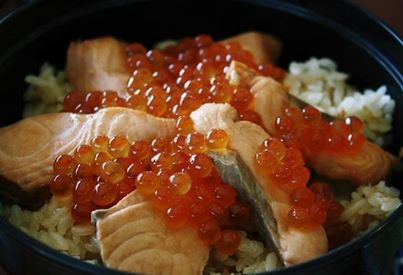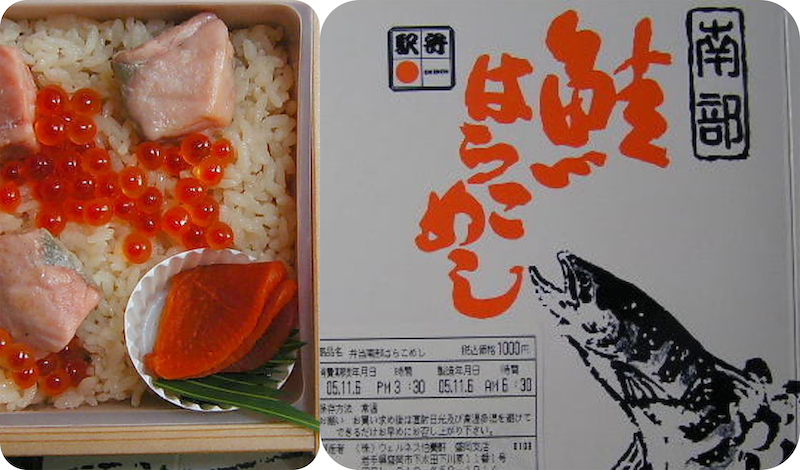
HARAKO MESHI, rice cooked with salmon and topped with roe
ハラコ飯
Harako Meshi
Salmon Rice with Roe
Archaeological evidence dating back at least 5,000 years shows that the early inhabitants of the Tohoku – the Jomon peoples—fished for salmon. The ancient coastline is dotted with inlets that today bear the names of well-known fishing ports: Oofunato, Rikuzentakada and Minami Sanriku, all of which were devastated by the tsunami in March of 2011. Before the disaster, Minami Sanriku had become a major center for farmed Coho salmon – bringing about 15,000 tons of fish a year to Japan’s domestic market. Slowly the industry is recovering, reclaiming market share from non-Japanese competitors.
Salmon has always played an important role in Tohoku cuisine, and Harako Meshi (literally “salmon child rice”) is a “signature dish” of the region. Often featured at family gatherings, variations abound – every household seems to have it’s own rendition. When presented as casual fare, the salmon is likely to be flaked and tossed into the rice as it steams for a final few moments. When divvied up, individual bowls are topped with a modest spoonful of salmon caviar. On special occasions, though, many home cooks will present the dish on a large platter garnished with slices of cooked salmon and clusters of caviar.

腹子飯駅弁
Harako Meshi Ekiben
Harako Mesh (salmon and rice cooked takikomi-style and topped with roe) is a popular ekiben throughout Miyagi Prefecture. It is sold year-round in Sendai Station.
DOWNLOAD recipe for Harako Meshi




